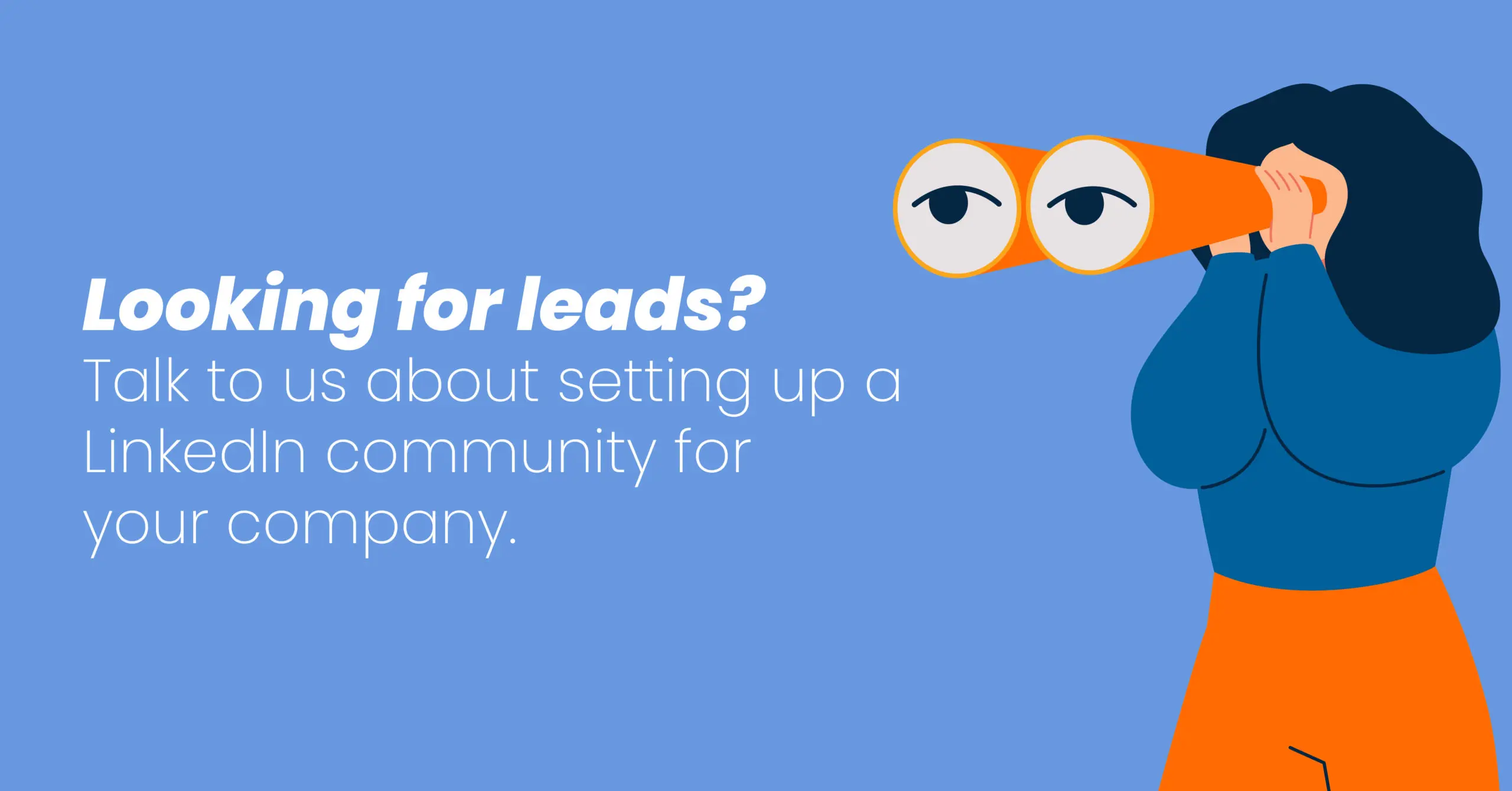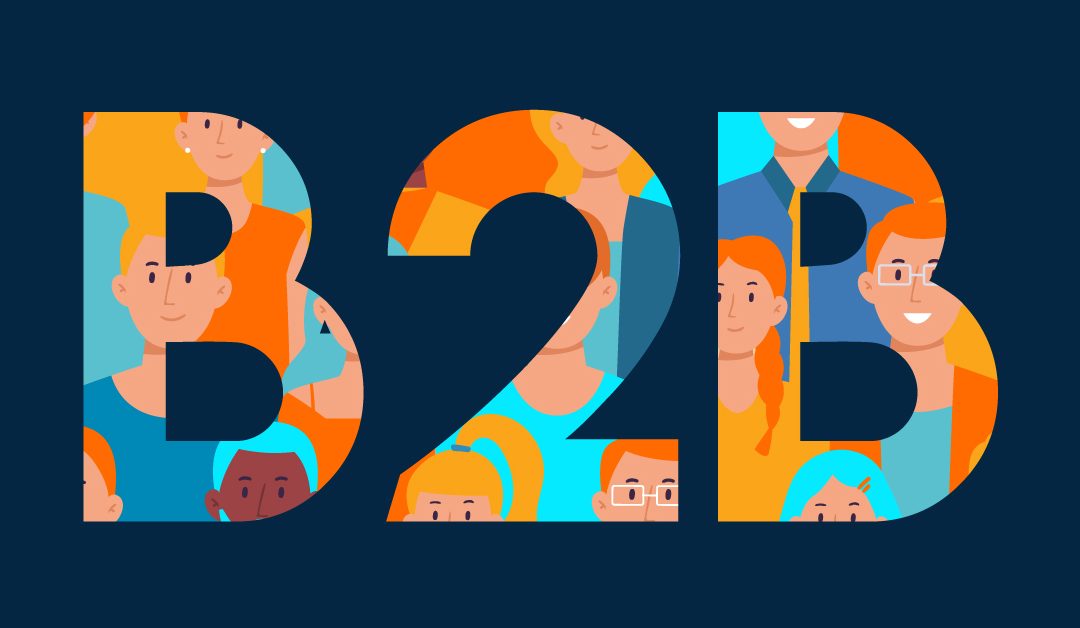What value does a LinkedIn community have for your B2B company?
LinkedIn communities are more than just groups.
They’re engaged, passionate, interactive clusters of professionals – people gathering together in the pursuit of a common interest.
With virtual being more important than ever before, people come to their online communities to discuss thought-leadership, trends, innovations, challenges, and aspirations within their niche.
A niche that they’re deeply passionate about.
Done well, communities deliver exceptional results for marketers who capitalise on them… and yet many businesses aren’t using social communities at all.
Here are 10 compelling reasons every B2B company needs to build a proper community.
1) Authenticity
The way businesses communicate has changed dramatically, and people expect authenticity.
Now more than ever, business is all about relationships – and you can only build relationships on genuine connections.
A Community Manager (who, because we’re perhaps decades away from “real” AI, is a real person) with the interest of their members as their number one goal provides you with a human-2-human platform.
This should be used to create and nurture connections in an authentic way, moving away from cold “transactionalism” to warm human conversation.
And from conversation to… well, hopefully conversion.
2) Insight
The communities you build provide value in the form of insights.
The modern business landscape being what it is, your members can’t be expected to give you anything unless you give them something first.
This is where your Community Manager’s finger needs to be on the pulse.
They should be sourcing interesting, insightful content that sparks conversation, allowing you to conduct genuine market research.
Your community is a (hopefully) large group of potential customers, and they’re already warm and engaged.
These are fertile grounds for audience insight:
- What do your prospects desire?
- What challenges are your customers struggling with?
- How can you better meet your customers’ needs with your product or service?
A thriving community can help you answer these questions.
3) Inbound
The modern customer journey is centred much more around them finding you, which means that you should be working harder on your inbound marketing.
Pulling your prospects and potential buyers to you by offering them something they want is much more effective than relentlessly shouting at them and hoping they hear you.
This is the core principle of inbound marketing: give your prospects something they want, when they want it.
Let them come to you.
Building a community means feeding members content they’re passionate about – unbranded industry news, insight and innovations – so that they’re more receptive and engaged when you share branded content with them.
An 80/20 ratio works well for us, but whatever proportion you use, the principle is the same: more unbranded and member focused, less branded.
4) Amplification
Building a community genuinely does allow you to amplify (read: spread) your message more efficiently.
Your community is your sophisticated soapbox to cleverly share branded content to people who’ve already expressed interest.
Herein lies your opportunity to double your audience.
Your LinkedIn company page (if you don’t have one yet, make one) caters to people who already know/trust your brand – your community is filled with people aligned with the topic you’ve sculpted it around, but don’t necessarily know/trust your brand.
You’re a thought leader; your community trusts the content you push out; they trust your branded content (when you do share it); they share it with their networks.
Voila. You’ve doubled your audience with a B2B community.
5) See meaningful ROI
Marketing spend can quickly reach jaw-dropping figures. For some weird reason, many marketers seem to have collectively become OK with the fact that a significant amount of this investment doesn’t deliver tangible ROI.
Enough!
In the digital age you shouldn’t be settling on immeasurable insights.
What you can’t measure, you can’t improve upon.
By investing more of your marketing spend in community building and less in “throw it blindly and hope it sticks” or “they’ve got one so we should too” campaigns, you’ll find yourself spending your money more efficiently.
6) Credibility
By creating an unbranded or near-brand neutral group, you’re establishing yourself as a thought leader within that group’s central topic.
Your community is the place to be for people within your industry.
You’re it, kiddo. The hotspot. Number 1 place in town.
People are turned off by salespeople. That’s not new news. So why do so many marketers (B2B, I’m looking right at you) forget that?
No one gives a shit about your latest piece of thinly-veiled propaganda.
What people care about (and what gives you credibility upon delivery) is high-quality, interesting, innovative, conversation-starters that are only tangentially linked to what you sell.
Once you have credibility, then you can feed in some well-placed branded content, and it’ll be viewed with – dare I say it – actual interest.
This decade, sales is all about not selling.
7) A buffet of leads
As it grows, your community will increasingly become a trusted hub for your leads.
Passionate industry professionals will flock to you, lured in by engaging content, great conversation and scintillating wit.
Your community makes it easy for you to identify, segment and nurture these leads in a highly-targeted way.
You’ll then highlight exactly which leads would be most valuable to you, and hold their hand all the way through the sales funnel.
8) Events
Communities are a Catch-22 – the good kind.
If you own a community that your niche loves and engages in, you can leverage that by putting on an event for that niche.
Your members, already engaged and interested, are much more likely to attend – and, in turn, your brand reputation and credibility, along with your community, will grow.
An event can be the holy grail of lead generation, giving you a captive audience to promote your brand to, within the context of an event they’re already hyper-engaged with.
Communities make events more successful, events make businesses more successful. It’s a no-brainer.
9) Visibility
The more content you create, the better optimised for search your brand is, and the more visible you are online.
The more visible you are, the more new prospects will be able to find you, and the more sales you’ll make.
Building communities adds to your marketing snowball – once growth starts, it won’t stop.
10) Own your space
With a well-positioned, well-managed community, you can lasso your niche or vertical market.
By creating an engaging, (almost) brand neutral, value-add community, you’re creating a destination for your potential prospects: a place they’ll naturally want to join, hang out and engage in.
Once they’re there, they stay there – if you maintain the group’s high quality.
Even better, people tend to commit to only one professional community.
They might belong to twenty LinkedIn groups (which can be communities if managed well), but only one community. So if you make that community yours, you’ve instantly shut your competitors out in the cold.
Say I’m an IT widget specialist. I join and quickly become an active member of an IT Widget community, getting stuck into discussion and sharing content.
Then the time comes for me to buy some new IT widgets.
Who do I go with? That unknown retailer, or that company that runs the community I’m a passionate member of?
It’s not a difficult choice.
Final thoughts
So, there you have it: 10 compelling reasons your B2B company needs a community.
And not just any community, but one that is mostly brand neutral, and focused on a niche or vertical. A hub.
Communities like that really work – and they’re absolutely people-centric and inbound at their core, based on the simple observation that people don’t like being sold to, and people will always flock to what they’re interested in.
Capture people’s passions and tie your brand into that, and you’re onto a winner.
Click here to talk to a strategist about setting up a community for your business.

